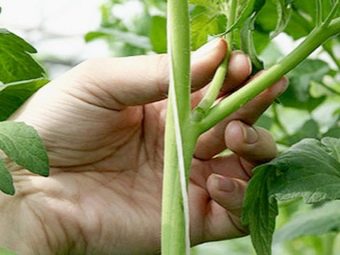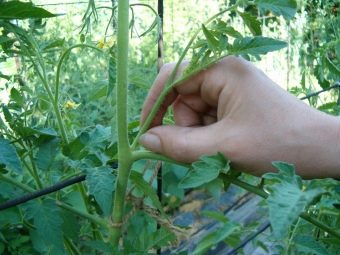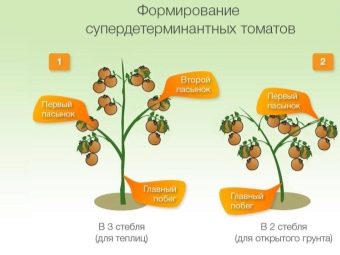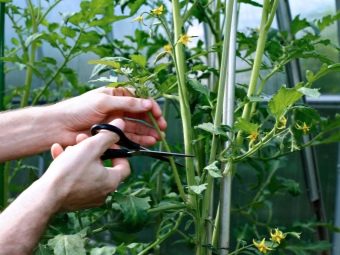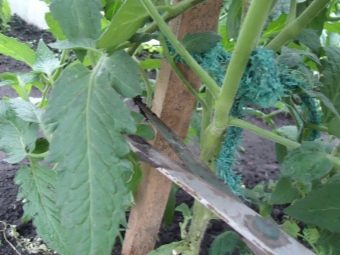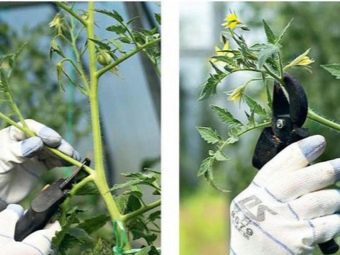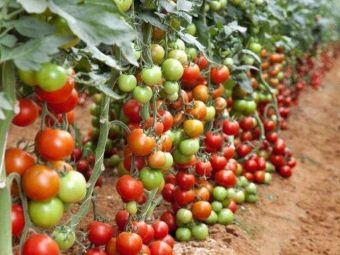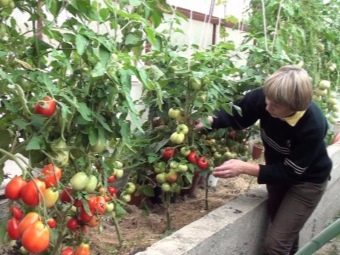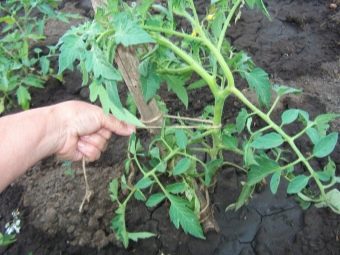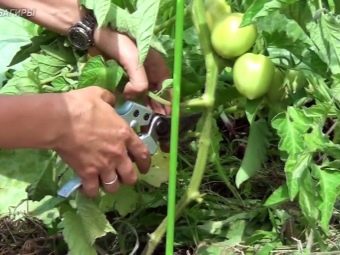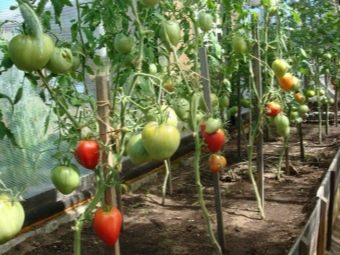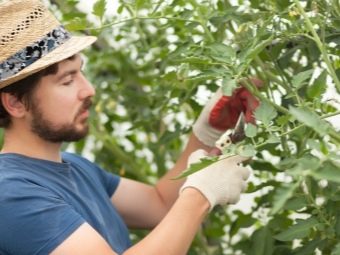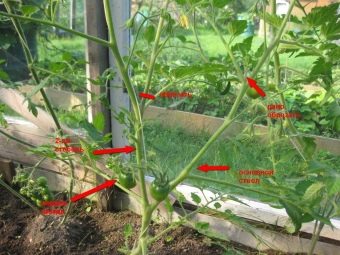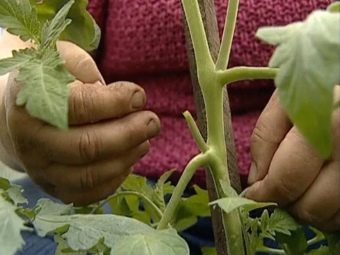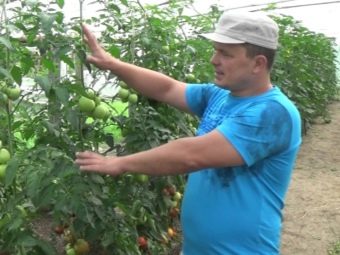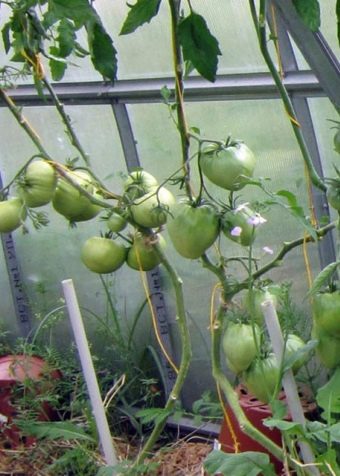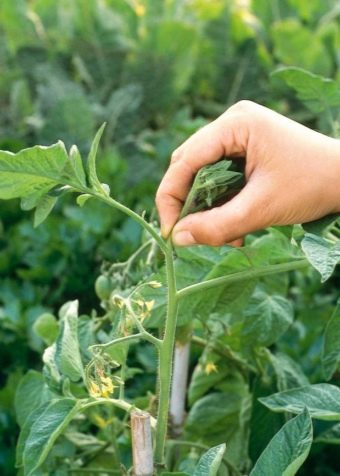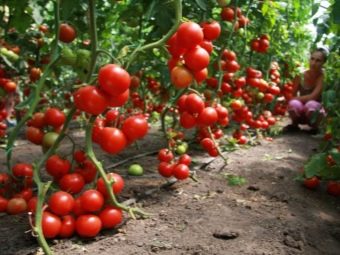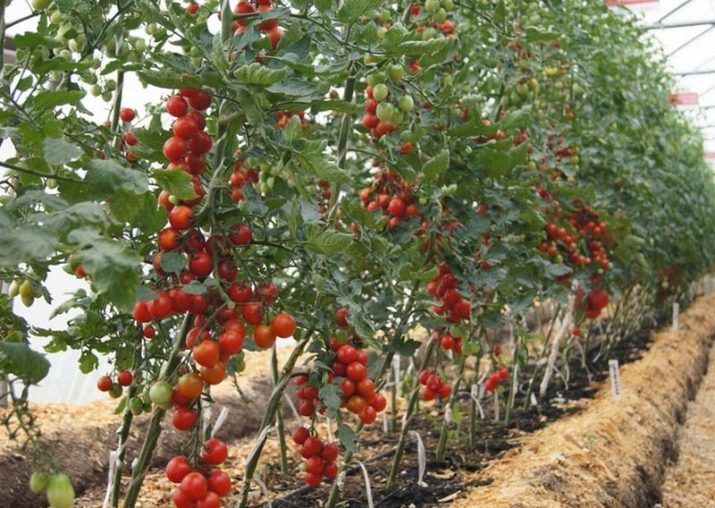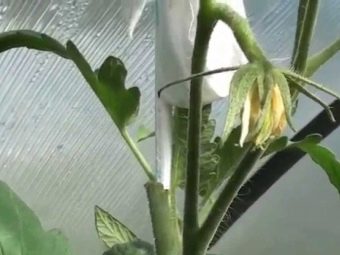How to form tomatoes in 2 stalks?

Pruning a tomato means removing unnecessary stepsons on a plant. These growths between the leaf and the stem are sometimes called shoots.They make the trunk much heavier, which is why the tomato can then simply break from the load when the fruit ripening period comes.
What is it for?
Tomato is easy to grow, its main requirements are few: watering, feeding and pruning. Can be planted in pots, containers, open ground, greenhouse. If you prefer to grow tomatoes in pots and containers, choose dwarf varieties such as Cherry and Patio, while tall and fluffy species are perfect for soil and greenhouse. Just as watering and fertilizer are of particular importance for the overall development of the tomato bush, pruning at the right time adds growth.
According to experts, it helps to increase yield. Tomatoes can be grown and harvested for a long time. They will be bigger, more meaty and juicy. Pruning helps keep the plant in shape, protects against pests and diseases.
Pruning depends on several factors: age, size, and the place where it grows.
Seedlings are quite thin in the early stages of growth, therefore, the first stepchildren are formed in an amount of 2-3 pieces. When the plant has not yet risen, it is undesirable to touch the side shoots. Pruning leaves is a rather complicated matter, it must be done to increase the amount of photosynthesized sugar, which is important for the formation of fruits, increasing their quality.
The cut of flowers is important for controlling the quantity as well as the quality of the fruit. Never use scissors for this work, remove only by hand.
Tomato dead and rotten vines and stems should be checked and removed, especially those that touch the ground, or those that are tangled with other bushes.
Here are six good reasons why you should prune tomatoes:
- you can grow a healthier and larger crop;
- fruits will be throughout the season;
- the absence of shoots and leaves from below helps to protect the plant from diseases;
- bushes take up less space due to its compactness;
- tomatoes at the end of the season ripen to the first frost.
To form tomatoes is necessary, because the growth in 2 stalks allows the plant to concentrate its energy on the development of vegetables, and not on new foliage. Sugar used in the process of photosynthesis, goes on the development of the fruit, so they are sweet and large.
Tomatoes can be divided into two categories: determinant and indeterminant.
Determinants usually do not require pruning because they grow more compactly. They are at a genetic level of a predetermined size, reaching which they stop growing.
Indeterminate tomatoes grow uncontrollably. They constantly produce new stems, leaves and fruits until the plant dies. Cherry tomatoes belong to this type. Fruits appear on the side, and not on the tips, at all stages of development of the tomato. Trimming is the best way to keep an undetermined height and reduce the footprint.
The purpose of the formation:
- the creation of strong stems;
- bush height adjustment;
- thinning bushes for better photosynthesis;
- air circulation around the fruit and foliage, which allows you to protect from disease.
Avoid trimming the leaves above the fruit clusters; these leaves protect the vegetables from sunburns below.
Molding is best for plants that grow tied to a vertical support. Thus, it is easy to see which foliage needs to be removed; it is easier to control the development of the main stems. In any case, success is to cut enough, but not too much, so that the fruits receive the required amount of sugar and sun.
Gardeners do not stop saying that improved air flow is always less disease. With a small amount of leaves, pruned plants have a lower density, which allows air to pass between them unhindered.Shoots dry out faster after rain, so they are less susceptible to diseases that develop with prolonged humidity. In addition, fewer leaves facilitate the detection of insect pests, otherwise they can be hidden by a thick layer of foliage.
Pruning at the right time directs the energy to create and ripen the fruit instead of the plant forming more leaves. There will probably be fewer fruits on the trimmed plant, but you make room for planting more bushes. Thus, it is possible to easily compensate for the difference in the quantity of the crop.
Nature provides so that when there are many fruits on a plant, it does not care about their ripening. If you trim the stepsons and leaves, all forces will be harvested. It is especially recommended to remove a large amount of foliage in the last months of ripening, when frost is approaching.
When to spend?
Properly cut tomatoes at a stage when the plant has already reached several tens of centimeters in height. It all depends on which bush you need. If low, the procedure is carried out as early as possible. In any case, the formation of two stems will help contain the growth of tomato.
It is better to decide at what frequency you are going to stick the tomatoand what technique you will use. In the greenhouse, it is recommended to carry out the procedure once a week, but to use rubber gloves, which are treated with an alcohol solution after each whip. This is necessary because the sap of an infected plant in the hands will cause the disease of the whole seedling.
If a determinate variety of tomatoes is planted, then after the appearance of 4 sheets, the formation of a flower brush begins and so on throughout the trunk with a reduction in the interval between shoots. At the very top of the inflorescence are located without an interval, therefore, in the southern regions of our country, these tomatoes are grown without staining. To form a bush, you must select the first or second stepson. You will need to use a trellis support to help the plant retain the fruit.
Varieties that are not genetically constrained for growth should be formed into one or two stems. That's because such tomatoes can create a huge amount of side shoots, thereby expanding and occupying a large area. If the height of the plant is more than 50 centimeters, the first stepson is left, and up to 5 brushes are saved on each branch, everything else is removed.
Formation process
In a greenhouse made of polycarbonate, tomato bushes go faster in growth than in the open field, so molding in two stems may be needed earlier. Begin the stepson when the plant becomes strong.
The scheme is very simple:
- after the plant reaches 30 centimeters in height, it is necessary to allow it to pick up the first inflorescence;
- remove all the leaves and stepchildren below the flowers, as they are not needed;
- bushes with a single stem produce fewer fruits, so it is better to form two;
- over the first group of flowers should grow several leaves, which then become the second core;
- do not tear off the tip too early; allow two sets of leaves to develop on the stepson before pinching the tip;
- leave 2 sets of leaves over the second future stem, they will protect the fruits from sun damage.
The procedure is repeated once a week, all unnecessary shoots are removed. When the plant reaches the desired height, pinch all the new growing tops. After a week or so, the tomato will stop trying to bring a new shoot in the upper part and focus on the fruits. Thus, the formation of bushes and their cultivation do not constitute anything difficult.
Recommendations
Use your thumb and forefinger to clamp the stepson and remove it without much harm to the plant. Remove shoots while they are still small and only a few centimeters in height.At this stage, they are easily separated from the stem, but when they become thicker, it is better to use scissors or a knife.
Sometimes you have to form an adult plant.then it is worth determining which shoots are the strongest. It is worth removing no more than one third of the whole plant, leave from 2 to 4 bases.
Take to clean the tomato from damaged leaves, broken shoots. Do not worry if you have to cut some flowers and undeveloped fruits. Keep in mind that the plant will be stronger and more productive in the long run if you help him. The bush over which it was necessary to work hard will come to life for several weeks.
Indeterminate tomatoes continue to bloom and bear fruit until they are completely dry, or the first frost hits. To get more fruit from your plant, start removing the stepsons four weeks before the first frost date. The plant will direct the energy that it used for new growth to the ripening of the fruit.
Professional gardeners say that it’s okay to remove stepchildren during the whole season. It does not harm the plant. The first leaves pinch off when transplanting seedlings into the ground. This allows you to put a tomato deeper into the ground, thereby giving him the opportunity to better take root.
If there are early flower ovaries on the stem, remove them, as the tomato may stop growing. Let the tomato root, pick up the required number of stems, get stronger, and only after that you can leave flower brushes.
Around the fruit, remove all stepchildren, but leave a few leaves as protection from direct sunlight. In some regions, gardeners remove any unnecessary shoots and cut the leaves high along the trunk.
As the season comes to an end, the tomato, on the contrary, is loaded with fruits, but they do not always have time to ripen. To accelerate, remove the growing tip of each main stem four weeks before cooling. This type of pruning causes the plant to stop flowering, and instead, directs the sugar produced to the remaining fruits.
There are gardeners who oppose the molding of tomato bushes, highlighting the following negative consequences:
- a strong difference is imperceptible, and the plant suffers;
- tomato yield per plant is reduced;
- pruning can expose stalks and leaves to stress;
- rot may appear.
Tomato grown in containers or pots, can be cut about the same way as the bushes that are planted in the ground. In this case, it is better to use dwarf varieties.
Clean the base of all the leaves and stems, without damaging the plant, to increase the flow of air, as well as get a mulching space. Each stem should be approximately the same length. As soon as the flowers appear, the leaves directly beneath them do not touch. If you want to reduce the number of fruits on the stem, simply remove some floral ovaries.
Pruning tomato plants does not take much time, but remember that excessive pruning can not only damage the crop, but also slow down the growth of the plant.
To learn how to form tomatoes in 2 stems, see the video below.

